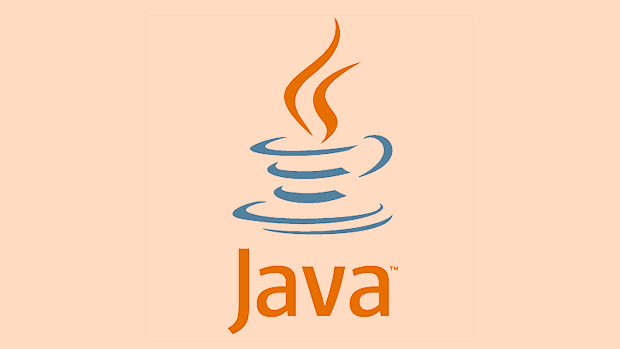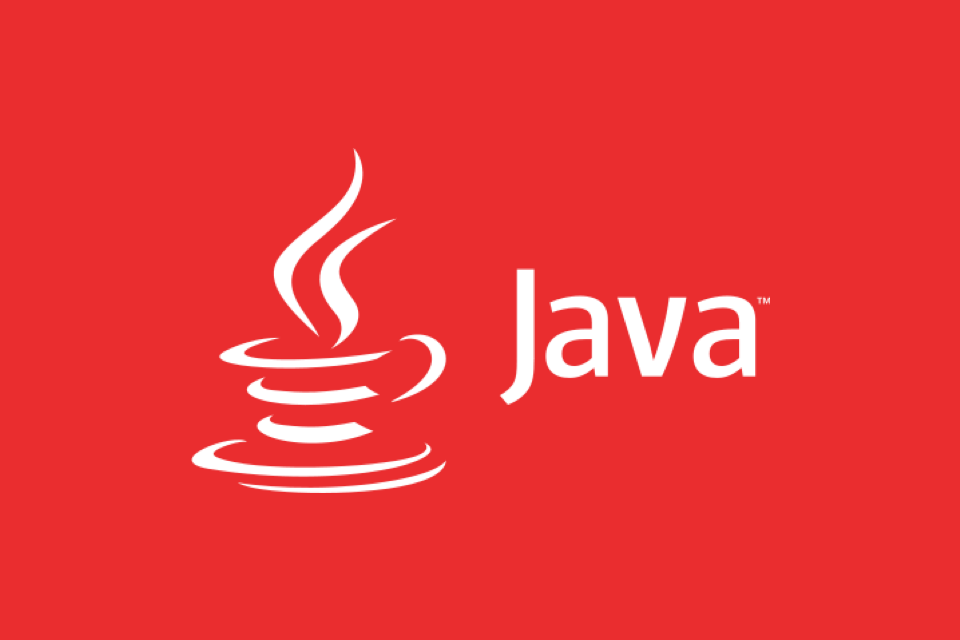Set up a Maven/Gradle project with JAX-RS dependencies like Jersey; 2. Create a REST resource using annotations such as @Path and @GET; 3. Configure the application via Application subclass or web.xml; 4. Add Jackson for JSON binding by including jersey-media-json-jackson; 5. Deploy to a Jakarta EE server or servlet container and test with tools like curl; Jakarta EE provides a standardized, enterprise-grade platform for building reliable and portable RESTful APIs using official Java specifications, making it ideal for environments prioritizing stability and long-term support.

Building RESTful APIs in Java with Jakarta EE is a solid choice for enterprise-grade applications that value stability, standards compliance, and integration with the broader Java ecosystem. Jakarta EE (formerly Java EE) provides a robust, specification-driven platform for developing scalable and maintainable REST services using JAX-RS (Jakarta RESTful Web Services).

Here’s how to build a RESTful API in Java using Jakarta EE:
1. Set Up Your Jakarta EE Project
Start by setting up a Maven or Gradle project with the necessary dependencies. If you're using Maven, include the JAX-RS API and a compatible runtime like Eclipse Jersey (reference implementation) or Apache CXF, or deploy on a full Jakarta EE server like Payara, WildFly, or Open Liberty.

Example pom.xml snippet using Jersey:
<dependencies>
<dependency>
<groupId>org.glassfish.jersey.core</groupId>
<artifactId>jersey-server</artifactId>
<version>3.1.3</version>
</dependency>
<dependency>
<groupId>org.glassfish.jersey.containers</groupId>
<artifactId>jersey-container-servlet</artifactId>
<version>3.1.3</version>
</dependency>
<dependency>
<groupId>org.glassfish.jersey.inject</groupId>
<artifactId>jersey-hk2</artifactId>
<version>3.1.3</version>
</dependency>
</dependencies>Or, if you're using a full Jakarta EE application server (like Payara), most APIs are already included.

2. Create a REST Resource Class
Use JAX-RS annotations to define endpoints. The @Path, @GET, @Produces, etc., make it easy to map HTTP methods to Java methods.
import jakarta.ws.rs.*;
import jakarta.ws.rs.core.MediaType;
import jakarta.ws.rs.core.Response;
@Path("/users")
@Produces(MediaType.APPLICATION_JSON)
public class UserResource {
@GET
public Response getAllUsers() {
// In practice, fetch from a service or database
var users = java.util.List.of(
new User(1L, "Alice"),
new User(2L, "Bob")
);
return Response.ok(users).build();
}
@GET
@Path("/{id}")
public Response getUserById(@PathParam("id") Long id) {
if (id == 1) {
return Response.ok(new User(1L, "Alice")).build();
} else {
return Response.status(Response.Status.NOT_FOUND).build();
}
}
@POST
@Consumes(MediaType.APPLICATION_JSON)
public Response createUser(User user) {
// Simulate creation
user.setId(3L); // assign ID
return Response.status(Response.Status.CREATED).entity(user).build();
}
}And a simple User record or class:
public record User(Long id, String name) {
public void setId(Long id) {
// needed for some JSON mappers if using mutable behavior
}
}3. Configure the Application
You can let JAX-RS auto-discover resources, or create an Application subclass to explicitly register them.
import jakarta.ws.rs.core.Application;
import java.util.Set;
public class RestApplication extends Application {
@Override
public Set<Class<?>> getClasses() {
Set<Class<?>> classes = new java.util.HashSet<>();
classes.add(UserResource.class);
return classes;
}
}Then register this in web.xml (if using it):
<web-app>
<servlet>
<servlet-name>javax.ws.rs.core.Application</servlet-name>
<servlet-class>org.glassfish.jersey.servlet.ServletContainer</servlet-class>
<init-param>
<param-name>jakarta.ws.rs.Application</param-name>
<param-value>com.example.RestApplication</param-value>
</init-param>
<load-on-startup>1</load-on-startup>
</servlet>
<servlet-mapping>
<servlet-name>javax.ws.rs.core.Application</servlet-name>
<url-pattern>/api/*</url-pattern>
</servlet-mapping>
</web-app>Alternatively, modern Jakarta EE apps can omit web.xml and rely on annotations.
4. Add JSON Support (MOXy or Jackson)
By default, Jersey uses MOXy for JSON binding. You can switch to Jackson for more flexibility:
Add to pom.xml:
<dependency>
<groupId>org.glassfish.jersey.media</groupId>
<artifactId>jersey-media-json-jackson</artifactId>
<version>3.1.3</version>
</dependency>Then register the JacksonFeature in your Application class or via web.xml init parameters.
5. Deploy and Test
Deploy your WAR file to a Jakarta EE or servlet container:
- Standalone: Use embedded Jetty or Tomcat with Jersey.
- Full Platform: Deploy to Payara Micro, WildFly, or Open Liberty for full Jakarta EE features.
Test with curl:
curl http://localhost:8080/yourapp/api/users
# Returns: [{"id":1,"name":"Alice"},{"id":2,"name":"Bob"}]Key Advantages of Jakarta EE for REST APIs
- Standardized: JAX-RS is a specification — portable across implementations.
- Dependency Injection: Use
@Injectwith CDI for clean service layer integration. - Security: Integrate with Jakarta Security (
@RolesAllowed, etc.). - Validation: Use Bean Validation (
@NotNull,@Size) on request bodies. - Asynchronous Processing: Support for
AsyncResponsefor long-running tasks.
Example with CDI:
@Path("/users")
@RequestScoped
public class UserResource {
@Inject
UserService userService;
@GET
public Response getAll() {
return Response.ok(userService.getAll()).build();
}
}Building RESTful APIs with Jakarta EE gives you a mature, enterprise-ready foundation. While newer frameworks like Spring Boot are more popular for microservices, Jakarta EE remains a strong, standards-based alternative — especially in environments where portability and long-term support matter.
Basically, if you want to build reliable, maintainable APIs using official Java standards, Jakarta EE with JAX-RS is a proven path. Just pick your runtime, define your resources, and go.
The above is the detailed content of Building RESTful APIs in Java with Jakarta EE. For more information, please follow other related articles on the PHP Chinese website!

Hot AI Tools

Undress AI Tool
Undress images for free

Undresser.AI Undress
AI-powered app for creating realistic nude photos

AI Clothes Remover
Online AI tool for removing clothes from photos.

Clothoff.io
AI clothes remover

Video Face Swap
Swap faces in any video effortlessly with our completely free AI face swap tool!

Hot Article

Hot Tools

Notepad++7.3.1
Easy-to-use and free code editor

SublimeText3 Chinese version
Chinese version, very easy to use

Zend Studio 13.0.1
Powerful PHP integrated development environment

Dreamweaver CS6
Visual web development tools

SublimeText3 Mac version
God-level code editing software (SublimeText3)

Hot Topics
 A Developer's Guide to Maven for Java Project Management
Jul 30, 2025 am 02:41 AM
A Developer's Guide to Maven for Java Project Management
Jul 30, 2025 am 02:41 AM
Maven is a standard tool for Java project management and construction. The answer lies in the fact that it uses pom.xml to standardize project structure, dependency management, construction lifecycle automation and plug-in extensions; 1. Use pom.xml to define groupId, artifactId, version and dependencies; 2. Master core commands such as mvnclean, compile, test, package, install and deploy; 3. Use dependencyManagement and exclusions to manage dependency versions and conflicts; 4. Organize large applications through multi-module project structure and are managed uniformly by the parent POM; 5.
 Building RESTful APIs in Java with Jakarta EE
Jul 30, 2025 am 03:05 AM
Building RESTful APIs in Java with Jakarta EE
Jul 30, 2025 am 03:05 AM
SetupaMaven/GradleprojectwithJAX-RSdependencieslikeJersey;2.CreateaRESTresourceusingannotationssuchas@Pathand@GET;3.ConfiguretheapplicationviaApplicationsubclassorweb.xml;4.AddJacksonforJSONbindingbyincludingjersey-media-json-jackson;5.DeploytoaJakar
 python property decorator example
Jul 30, 2025 am 02:17 AM
python property decorator example
Jul 30, 2025 am 02:17 AM
@property decorator is used to convert methods into properties to implement the reading, setting and deletion control of properties. 1. Basic usage: define read-only attributes through @property, such as area calculated based on radius and accessed directly; 2. Advanced usage: use @name.setter and @name.deleter to implement attribute assignment verification and deletion operations; 3. Practical application: perform data verification in setters, such as BankAccount to ensure that the balance is not negative; 4. Naming specification: internal variables are prefixed, property method names are consistent with attributes, and unified access control is used to improve code security and maintainability.
 css dark mode toggle example
Jul 30, 2025 am 05:28 AM
css dark mode toggle example
Jul 30, 2025 am 05:28 AM
First, use JavaScript to obtain the user system preferences and locally stored theme settings, and initialize the page theme; 1. The HTML structure contains a button to trigger topic switching; 2. CSS uses: root to define bright theme variables, .dark-mode class defines dark theme variables, and applies these variables through var(); 3. JavaScript detects prefers-color-scheme and reads localStorage to determine the initial theme; 4. Switch the dark-mode class on the html element when clicking the button, and saves the current state to localStorage; 5. All color changes are accompanied by 0.3 seconds transition animation to enhance the user
 css dropdown menu example
Jul 30, 2025 am 05:36 AM
css dropdown menu example
Jul 30, 2025 am 05:36 AM
Yes, a common CSS drop-down menu can be implemented through pure HTML and CSS without JavaScript. 1. Use nested ul and li to build a menu structure; 2. Use the:hover pseudo-class to control the display and hiding of pull-down content; 3. Set position:relative for parent li, and the submenu is positioned using position:absolute; 4. The submenu defaults to display:none, which becomes display:block when hovered; 5. Multi-level pull-down can be achieved through nesting, combined with transition, and add fade-in animations, and adapted to mobile terminals with media queries. The entire solution is simple and does not require JavaScript support, which is suitable for large
 Developing a Blockchain Application in Java
Jul 30, 2025 am 12:43 AM
Developing a Blockchain Application in Java
Jul 30, 2025 am 12:43 AM
Understand the core components of blockchain, including blocks, hashs, chain structures, consensus mechanisms and immutability; 2. Create a Block class that contains data, timestamps, previous hash and Nonce, and implement SHA-256 hash calculation and proof of work mining; 3. Build a Blockchain class to manage block lists, initialize the Genesis block, add new blocks and verify the integrity of the chain; 4. Write the main test blockchain, add transaction data blocks in turn and output chain status; 5. Optional enhancement functions include transaction support, P2P network, digital signature, RESTAPI and data persistence; 6. You can use Java blockchain libraries such as HyperledgerFabric, Web3J or Corda for production-level opening
 How to use Java MessageDigest for hashing (MD5, SHA-256)?
Jul 30, 2025 am 02:58 AM
How to use Java MessageDigest for hashing (MD5, SHA-256)?
Jul 30, 2025 am 02:58 AM
To generate hash values using Java, it can be implemented through the MessageDigest class. 1. Get an instance of the specified algorithm, such as MD5 or SHA-256; 2. Call the .update() method to pass in the data to be encrypted; 3. Call the .digest() method to obtain a hash byte array; 4. Convert the byte array into a hexadecimal string for reading; for inputs such as large files, read in chunks and call .update() multiple times; it is recommended to use SHA-256 instead of MD5 or SHA-1 to ensure security.
 python parse date string example
Jul 30, 2025 am 03:32 AM
python parse date string example
Jul 30, 2025 am 03:32 AM
Use datetime.strptime() to convert date strings into datetime object. 1. Basic usage: parse "2023-10-05" as datetime object through "%Y-%m-%d"; 2. Supports multiple formats such as "%m/%d/%Y" to parse American dates, "%d/%m/%Y" to parse British dates, "%b%d,%Y%I:%M%p" to parse time with AM/PM; 3. Use dateutil.parser.parse() to automatically infer unknown formats; 4. Use .d






